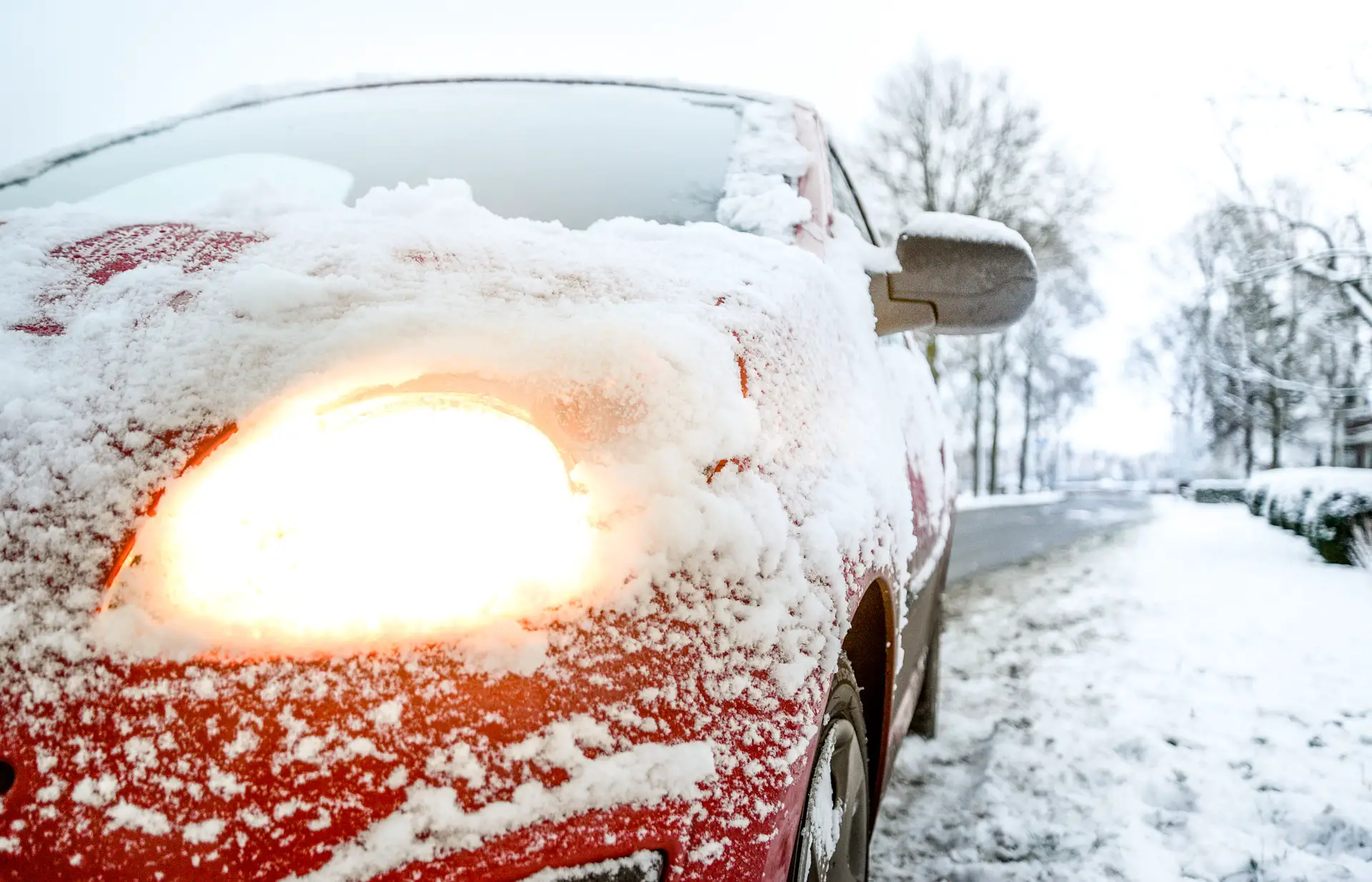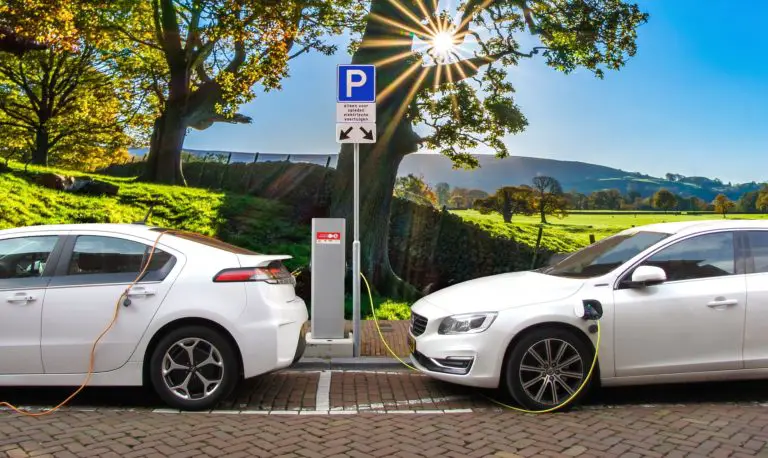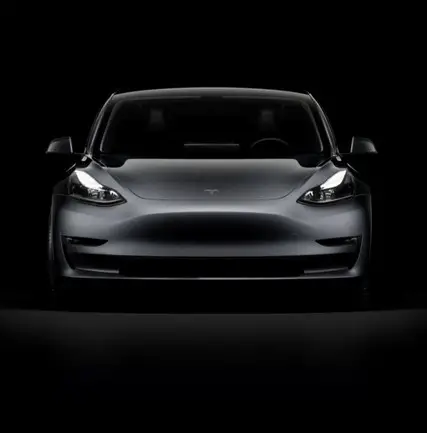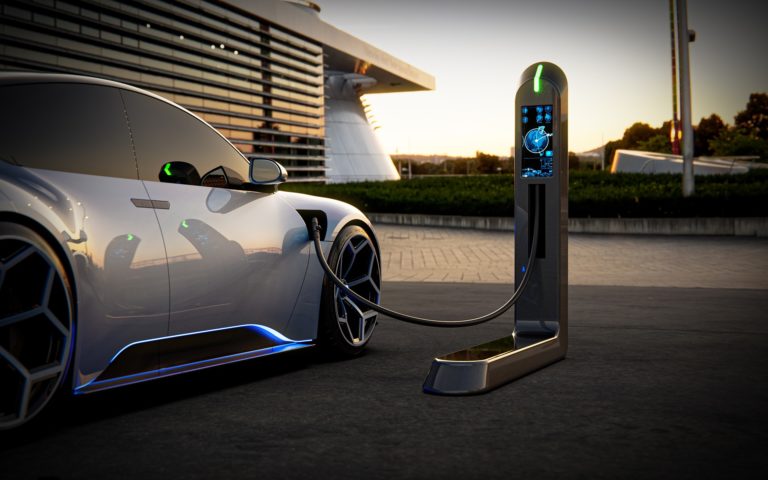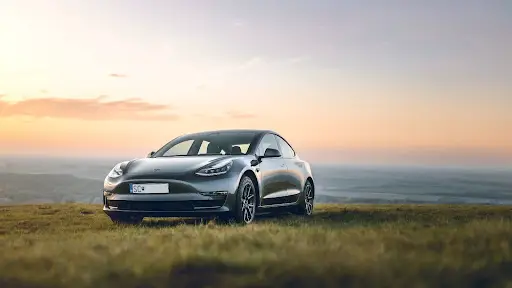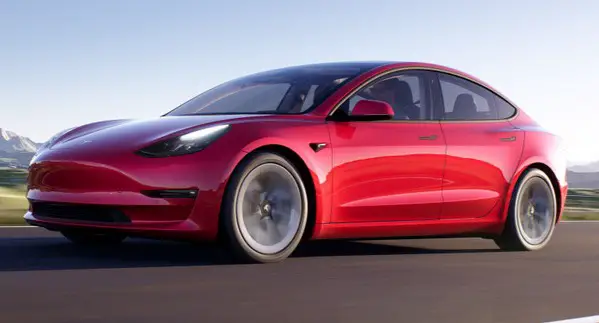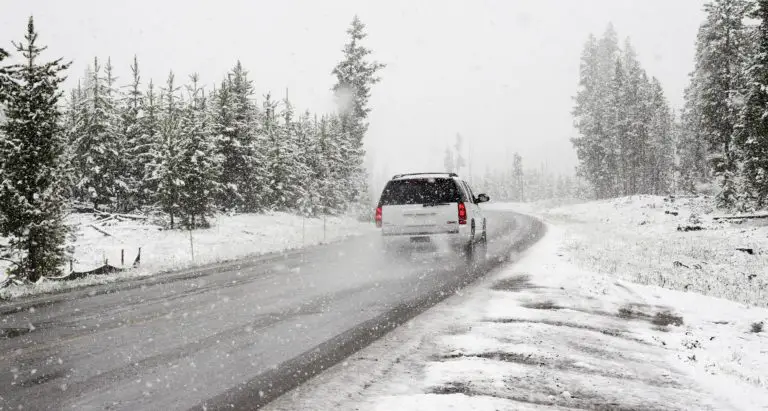Driving Electric Cars In Winter: Everything You Need To Know
By the end of 2020, more than 1,8 million Americans owned Electric Vehicles (EVs); this was a 300% growth over the number of EVs owned in 2016. With that growth trajectory, most vehicle sales will be EVs by the end of the decade. All manufacturers have been forced to follow the lead set by Tesla to invest in EV development.
Driving an EV in winter is not very different from driving a conventionally powered car; in fact, the actual driving experience may be more stable with the EV’s lower center of gravity. The batteries need to be looked after a little more carefully and proactively manage the cabin heat.
People often seem a little horror-struck when you mention driving an EV in harsh winter conditions. The idea of driving an electrically powered vehicle through very wet conditions appears to be almost mutually exclusive. In this article, we explore the effect winter weather has on EVs.
Table of Contents
-
Can You Drive An Electric Car in Winter?
- Are Electric Vehicles Safe to Drive on Winter Roads?
- Will the Water Damage the EV?
- Will the Batteries Cope with the Cold Winter Weather?
-
The Precautions to Follow to Ensure Battery Health in Water
- Keep the Battery Charge Higher than 20%
- Make Sure Your Charging System is Optimized for the Cold
- Precondition the Battery in Winter
- Adjust Your Driving Style in Winter
- Park the EV in the Sun During the Day in Winter
- Use the Cars Accessories to Heat the Interior in Winter
- Keep Your EV Tyres Inflated in Winter
- Try to Keep Your EV as Light as Possible in Winter
- Prioritize Visibility for Winter Driving
- Do EVs Have Heaters?
- Conclusion
Can You Drive An Electric Car in Winter?
Driving an EV in Winter is as safe as driving any other type of vehicle during these months. To expand on this, we must discuss why people think driving an EV in Winter may be unwise to answer this question.
Are Electric Vehicles Safe to Drive on Winter Roads?
An EV’s driving behavior on wet, snowy, or slippery surfaces is superior to a conventionally powered car.
EV batteries, which comprise a quarter of the vehicle’s total weight, are installed below the body of the passenger cabin; this results in a lower center of gravity than vehicles not fitted with batteries.
By lowering the center of gravity, handling will improve.
The Car Will Corner More Precisely
The car’s center of gravity plays a significant role in turning the vehicle. As the car moves on the road and starts turning, the front wheels change direction and cause the car’s momentum to be transferred in the turn direction.
The center of gravity moves, causing the car to lean opposite the corner. The higher the center of gravity, the greater the lean angle. If the vehicle leans at too great an angle, the wheels on the side of the turn may lift, causing a reduction in traction.
A lower center of gravity will keep a flatter stance and all four wheels more firmly on the surface.
When turning in slipper conditions, the more tire tread on the road, the better the chance of making the corner.
Acceleration and Braking Will Be More Effective
When accelerating and braking, the vehicle wheels ideally need to remain in complete contact with the road.
When accelerating, the acceleration forces the wheels to move upward; this results in the front of the car lifting and a potential loss of stability.
The opposite is true when braking, as the deceleration forces now act in a downward trajectory, causing the vehicle’s rear to rise and the front to drop. Once again, not all wheels will maintain the same traction, and the car will be unstable.
Gearheads spend thousands of dollars to lower the center of gravity of their internal combustion-powered racers. They will lower the suspension, install lower profiled tires, reduce shock absorber travel throws, and apply electronic traction devices.
The excellent news for EV drivers is that they automatically get a car with a low center of gravity as part of the deal.
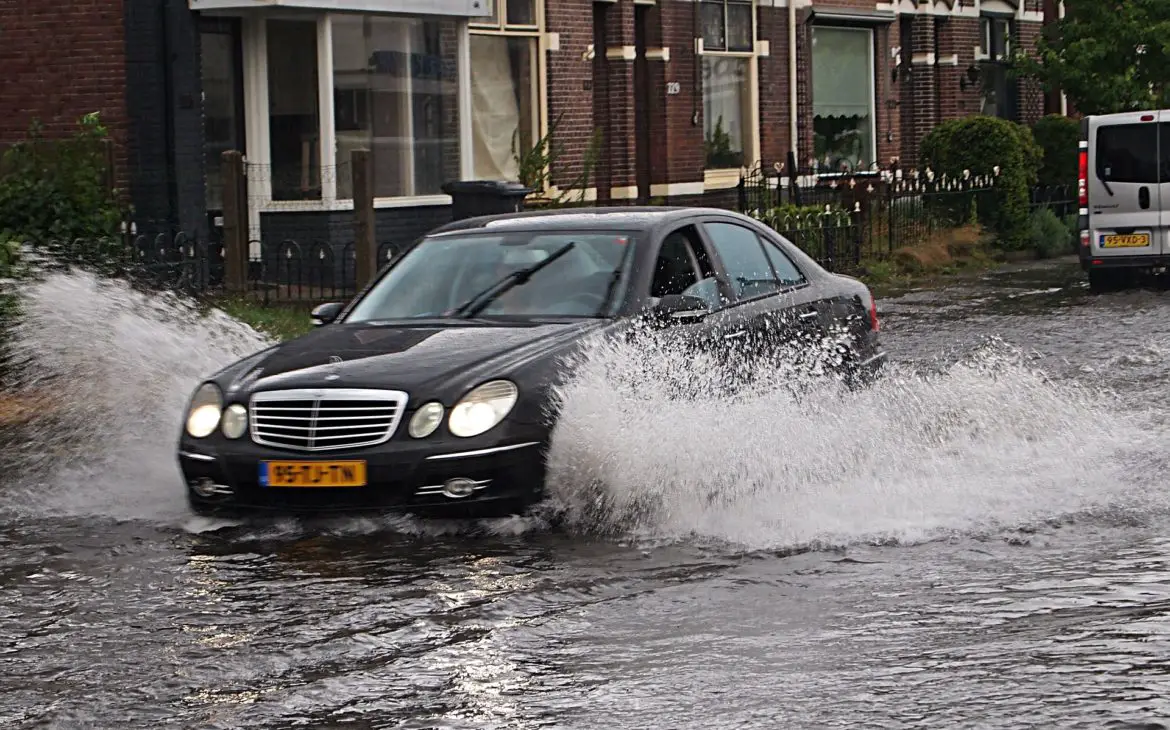
Will the Water Damage the EV?
Although it is generally taboo to mix water and electricity, there is no more danger in driving an EV in wet or snowy conditions than a vehicle powered by an Internal Combustion engine.
By law, all the electrical components of an EV are very tightly sealed. They all have an IP (Ingress Protection) rating of IP67; this means that it must be possible for the electrical components to be fully submerged in 1.5 meters of freshwater for 30 minutes.
The IP67 rating makes EVs potentially more reliable in wet weather than a conventionally powered car.
An internal combustion engine is vulnerable to moisture in the ignition system, which disables the car. On the other hand, EVs can safely travel through the water as deep as 1.5 meters, and by law, the engine and battery components must remain fully functional for at least 30 minutes.
Will the Batteries Cope with the Cold Winter Weather?
Cold weather has three effects on an EV.
Batteries are Less Efficient
According to the Automobile Club, In the United Kingdom, EVs driving range goes down in cold weather and can reduce by between 12% to 40% depending on the conditions.
This degradation is not confined to battery-powered vehicles as cold weather also affects the fuel efficiency of internal combustion engine vehicles. A study by FleetCarma found that, on average, internal combustion engine vehicles had a 19 percent decrease in range at 0°F.
The Regenerative Power Systems Are Degraded
Regenerative braking is less effective, so batteries recharge less.
Batteries Do Not Accept As Great A Charge
Cold weather limits charging (not a complete recharge) to protect the battery.
Modern batteries are designed to deliver 100 percent of their power at around 20 degrees Celsius (68 Fahrenheit).
Batteries function through an electrochemical reaction, which sends power to the terminal ends. This process slows down in freezing weather, causing the battery to drain faster.
When Lithium-ion batteries’ internal temperature drops below 32 degrees, the cells stop accepting the same amount of charge as they did in warmer temperatures.
Many factors can influence Ev’s temperature, so most EV manufacturers have integrated clever battery thermal technology into their products.
Modern EVs are manufactured to handle cold conditions. They have systems to divert any generated heat to the battery to increase its temperature and create optimal functioning conditions.
With EVs, this is made more difficult as the motor has fewer moving parts, which cause less friction and therefore produce less heat to be sent to the batteries.
An EV driver needs to take full advantage of these systems to ensure the batteries are protected as directed by the manufacturer’s instruction.
The Precautions to Follow to Ensure Battery Health in Water
Cold weather may place extreme stress on batteries, but owners can take actions that will help maintain both the charge and the battery’s health.
Keep the Battery Charge Higher than 20%
Don’t allow the battery charge level to reduce below 20% in icy conditions.
If you know you are going out later, start charging the EV as soon as you get home. You can schedule the charging session to ensure the maximum available heat for the car and the battery before you set off. Every minute of charge is like a credit in the bank.
Doing this will also help regenerative braking function better.
If your home-based charging system has a power boost or fast charging option, now is the time to select it. The point is to get as much charge into the battery as possible.
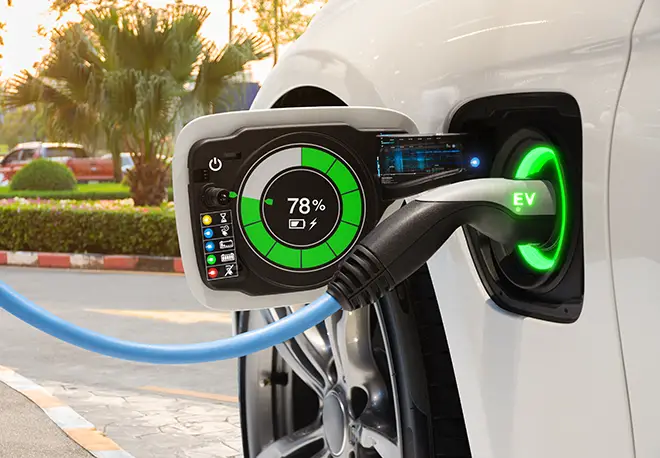
Make Sure Your Charging System is Optimized for the Cold
Ensure that your charger is specifically designed to operate at maximum capability in freezing weather; this will enable the battery to receive as much charge as possible in as short a time as feasible, which will work to give you a more effective range.
Some batteries have a fast charging or boost function, which forces a higher charge into the battery over a shorter time frame.
Finally, you will need a smart charger if your electricity utility charges lower rates for off-peak periods; this allows you to schedule charging sessions during the off-peak periods when the electricity is cheaper or you are about to embark on a trip. Over time this will save you substantial cash.
This technology enables you to schedule the charges from your smartphone when you are geographically separated from the EV, i.e., when you are watching your favorite TV show from the comfort of your couch.
When you research the charger you will buy, make sure that it is entirely weather-resistant and can operate in all weather conditions, irrespective of whether these involve monsoons, wind, rain, snow, and ice. The charger must be specified for external installation permanently if you park your EV.
Mainly, it should enable safe charges in temperatures well below 0°, so you won’t have to worry about your charger letting you down when the winter freeze starts.
Precondition the Battery in Winter
Most EVs have a preconditioning function available to raise the temperature in the cabin and thereby raise the battery’s temperature to a more optimum level.
Preconditioning the battery will ensure that the battery will be at optimum temperature when the vehicle starts consuming current.
Adjust Your Driving Style in Winter
It’s snowing on the road, and the last thing you would consider doing is practicing your 0- 60 mph acceleration ability! Not only is it dangerous, but it will also drain the battery much faster than in warm conditions.
Adjusting the way you drive and driving slightly slower while also accelerating and braking more gently will conserve energy and boost your EV range in icy conditions.
Most EVs have an ECO mode to help you get through times like this, and if you need some help, switch it on, and the EV will take over these functions by forcing a lower acceleration by reducing the power to the motor.
Park the EV in the Sun During the Day in Winter
Every degree of warmth helps, and even if the air temperature is low, if there is a spot of sun in which you can park, it will have a beneficial effect on the car’s battery.
If there is no sunny spot and you have access to a covered garage, keeping the car parked inside is an excellent idea.
Use the Cars Accessories to Heat the Interior in Winter
Ideally, you will plug the car into an AC wall socket, and you can use the whole battery preconditioning feature without compromising the EV battery charge.
If there is no mains electricity power supply available, to help you protect the battery’s charge, switch on the ancillary heating devices that consume a smaller current rather than using the full battery preconditioning function. These may include the heated steering wheel and heated seats.
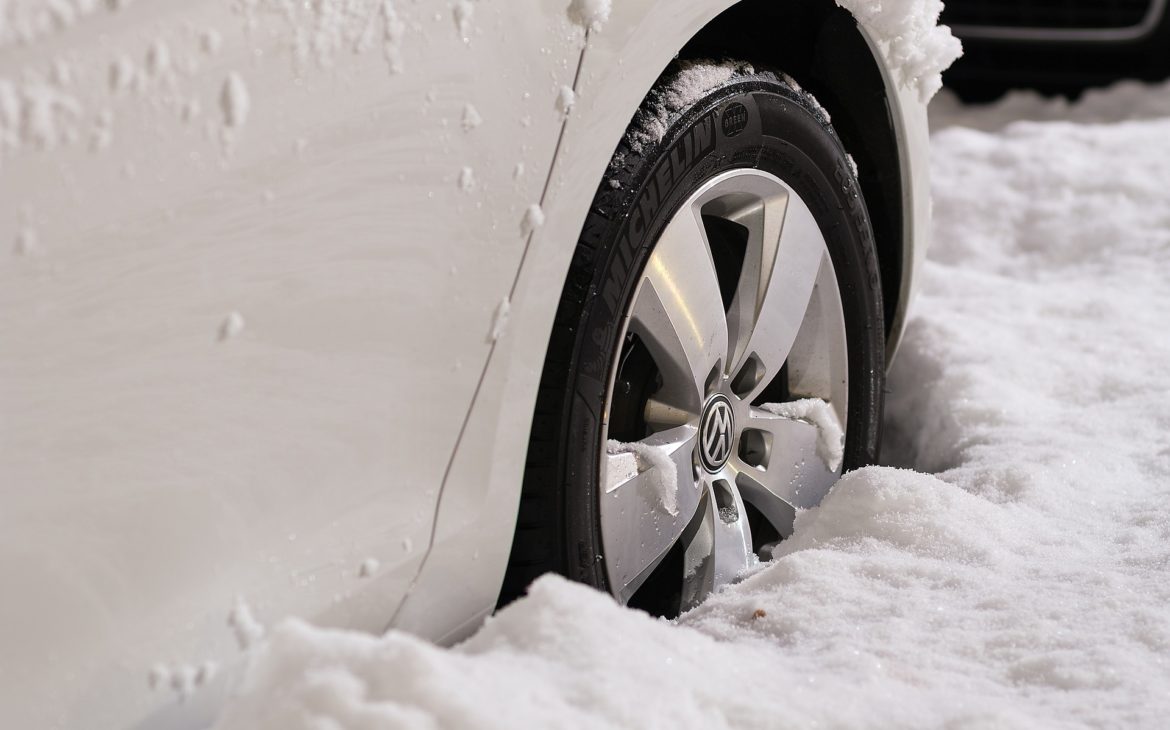
Keep Your EV Tyres Inflated in Winter
Every little bit counts – right? The higher pressure the tires are inflated to, the lower the running resistance. Higher tire pressures result in a lower power requirement from the engine and, therefore, a lower load on the battery.
Regularly check the tire pressure during the winter months, and you will squeeze a little more range from your battery.
It is also good to switch to Winter tires; at temperatures less than 7°C, summer tires do not performance degrades. Winter tires use more supple rubber, deeper treads, and more grooves to provide better traction and therefore improve the grip, optimize braking, and minimize the chance of hydroplaning.
Try to Keep Your EV as Light as Possible in Winter
The heavier your vehicle, the more energy it will use, so remove unnecessary items inside your car. And, if you’ve parked your electric car in the snow, remember to sweep snow or ice off the entire vehicle to reduce its weight and improve its aerodynamic drag.
Prioritize Visibility for Winter Driving
The windscreen wiper blades must be in good condition, and you should fill the windscreen reservoirs with an approved de-icing fluid and check that the system works.
It is essential to make sure you have a windshield scraper available.
Do EVs Have Heaters?
Most people are surprised that running the regular car accessories on an EV while not moving does not necessarily significantly drain the battery.
All the ancillary functions such as the computer, lights, sound system, air conditioner/heater run on DC power represent a tiny part of the overall power draw.
Because of this, EVs can continue to operate the DC consumers in cold, rainy, or freezing weather conditions.
Conclusion
Arguably, EVs are better suited to traveling in winter conditions than their internal combustion engine cousins. The fact that electricity is part of an EVs makeup has minimal bearing when driving in adverse conditions.
Whether you want to or not is another question, but knowing that your EV won’t be compromised if you are called out in those conditions is reassuring.
Amazon and the Amazon logo are trademarks of Amazon.com, Inc, or its affiliates.

